@iau-wgsn.bsky.social
BlueSky - our IAU edu infos
Please Contact Us
Channel
@iau-wgsn.bsky.social
BlueSky - our IAU edu infos
Please Contact Us
Channel
the plastic locomotive from the starter set is much larger than the sophisticated electric models, it is battery driven (i.e. the speed can be reduced only by attaching more wagons). Instead of a spherical lamp, we first used a normal desktop light.
This works as long as the photometre is used only at one specific position and the lamp can be directed towards it. The effect of the transit (of the dark train in front of the bright lamp) is the same.
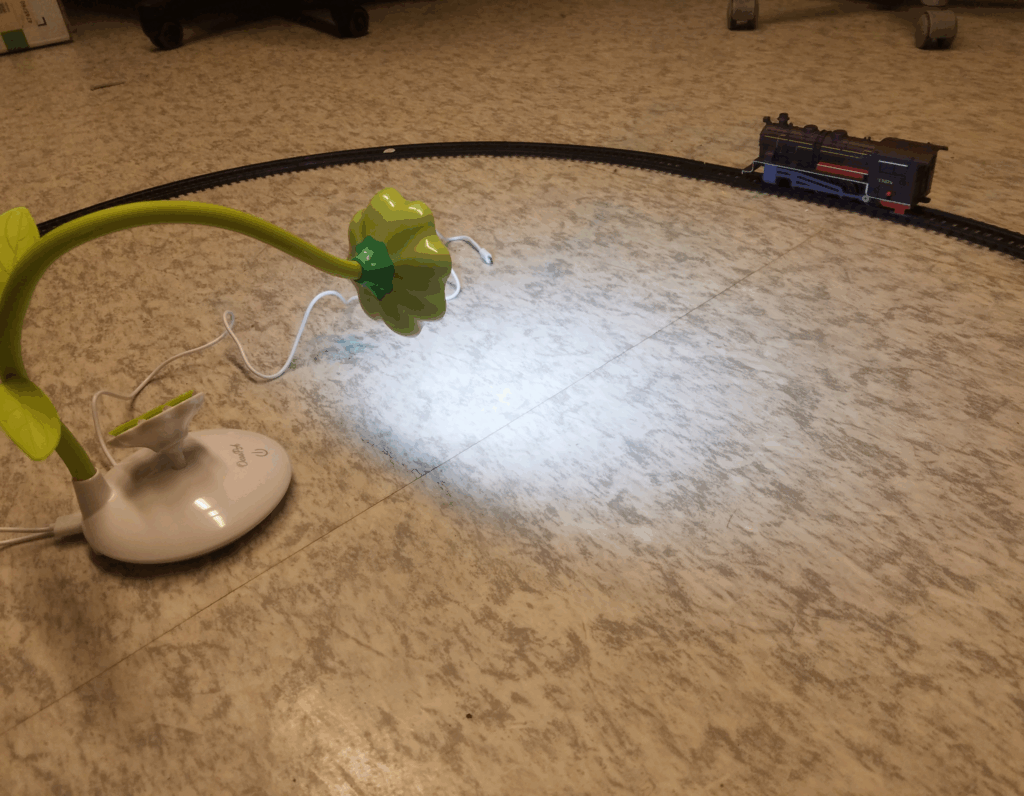

A cheap photometre worked but on the long run, it turned out to waste battery power.
A professional aquarium photometre from the biology department worked much better.
The best one turned out to be a photometre that was designed for measuring the UV-radation of desktop screens. Yet, this one (which could even directly store the data) is, of course, not sensitive in red.
In a next step, we aimed at building a model of a planetary system. Using a spherical lamp at the center, we contracted two tracks for two locomotives “orbiting” around a lamp.
technical drawing below, published in German: “Plattenmaß” means “measure/ size of the plate”, “Bahn” means “orbit”, “Rand” means “edge”; “AE” is German for “AU=astronomical unit”, “Periheldistanz” is “distance to perihelion”.
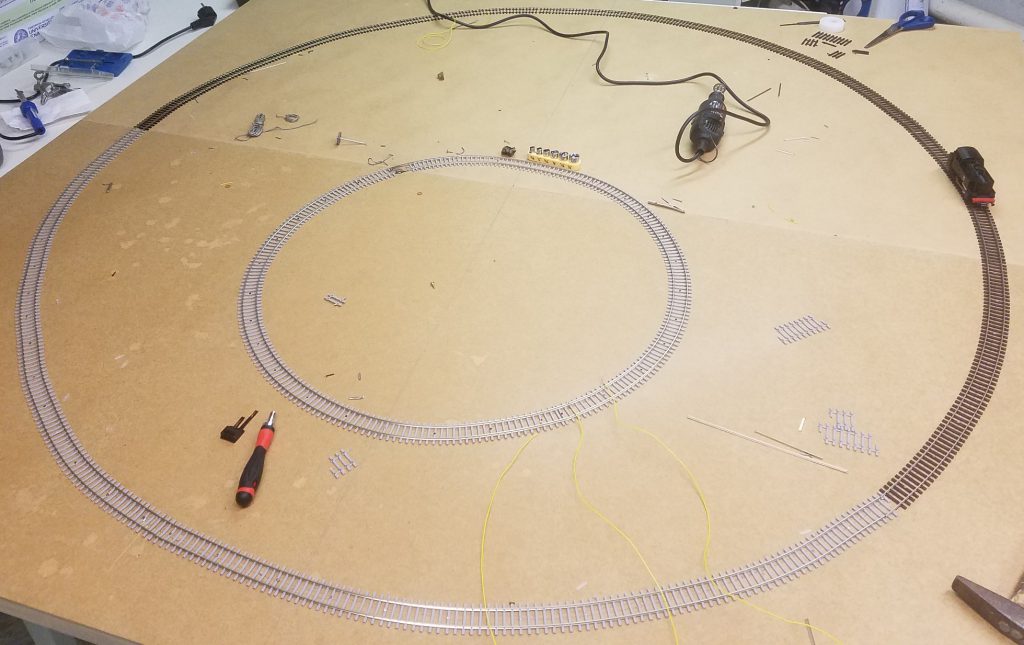
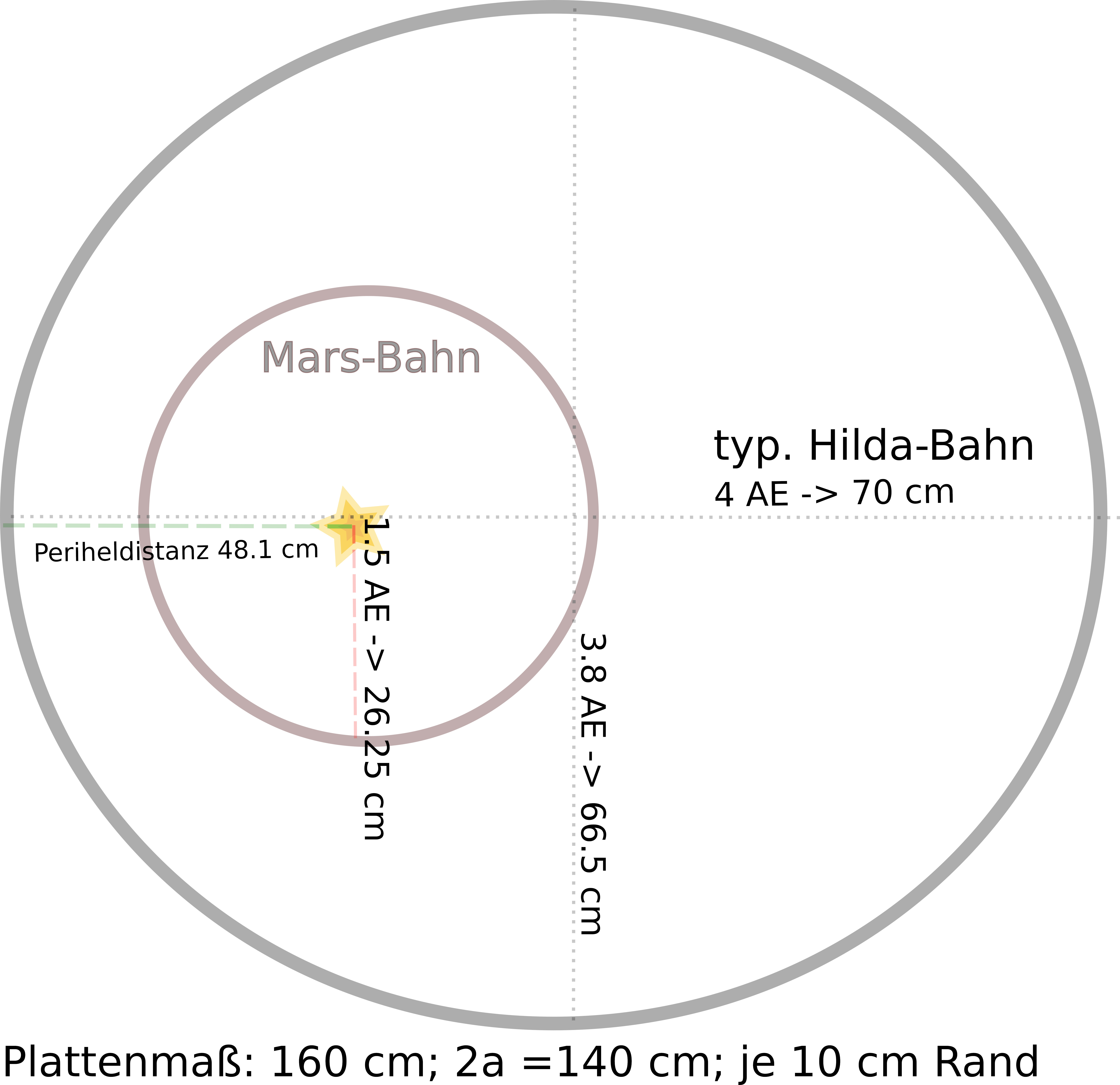
In a freehand experiment, we could simply make a train move on a circle around the lamp. Strictly speaking, however, they move on Keplerian paths, i.e. on ellipses.
The ellipticity of the large planets of our solar system is so small that we would not be able to see them – even more so in this miniaturization. That’s why I took the scale of one of the big planets (Mars) and a typical planetoid of the Hilda group as a template for my model.
Whether we want to use two rail-orbits or three or only one: we could build as many as wanted

Putting the lamp on a rotatable cake plate makes the simulation of Doppler wobble possible.
When we say that a planet runs around a star, strictly speaking this is only half the truth. Rather, it is that both are running around a common center of gravity, so the star is also performing a small elliptical motion.
If the planet revolves in the plane of view, this results in a rhythmic motion of the star toward and away from us. Astronomy measures this so-called radial component of the star’s motion as the rhythmic blue or red shift of its spectral lines.
This effect of wavelength change in radial motion (toward us or away from us), which we know acoustically as the Doppler effect [after the Austrian Hans Christian Doppler], we recreate in experiment by placing our spherical light eccentrically on a (glass) pie plate.
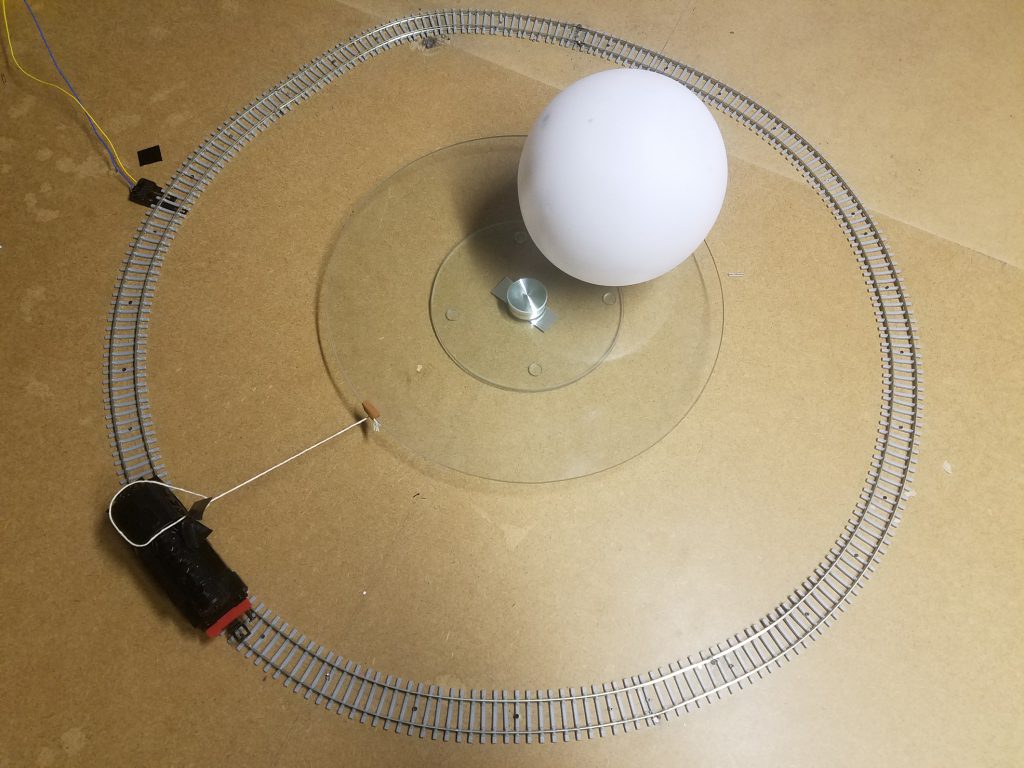
(Originally, I wanted to find an electrical solution for the locomotive and lamp always facing each other, but two resourceful ninth graders solved things mechanically.)
With “LEGO”, we even created a rotating construction that allowed us to let two lamps orbit each other while the locomotive(s) were orbiting them: as if a planet went around a double star of Algol-like type.
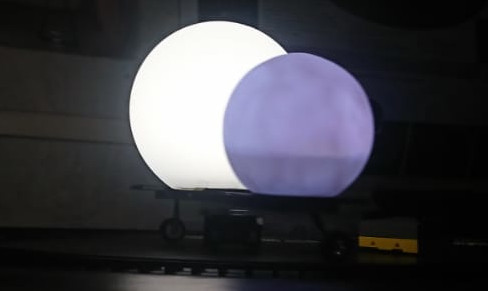
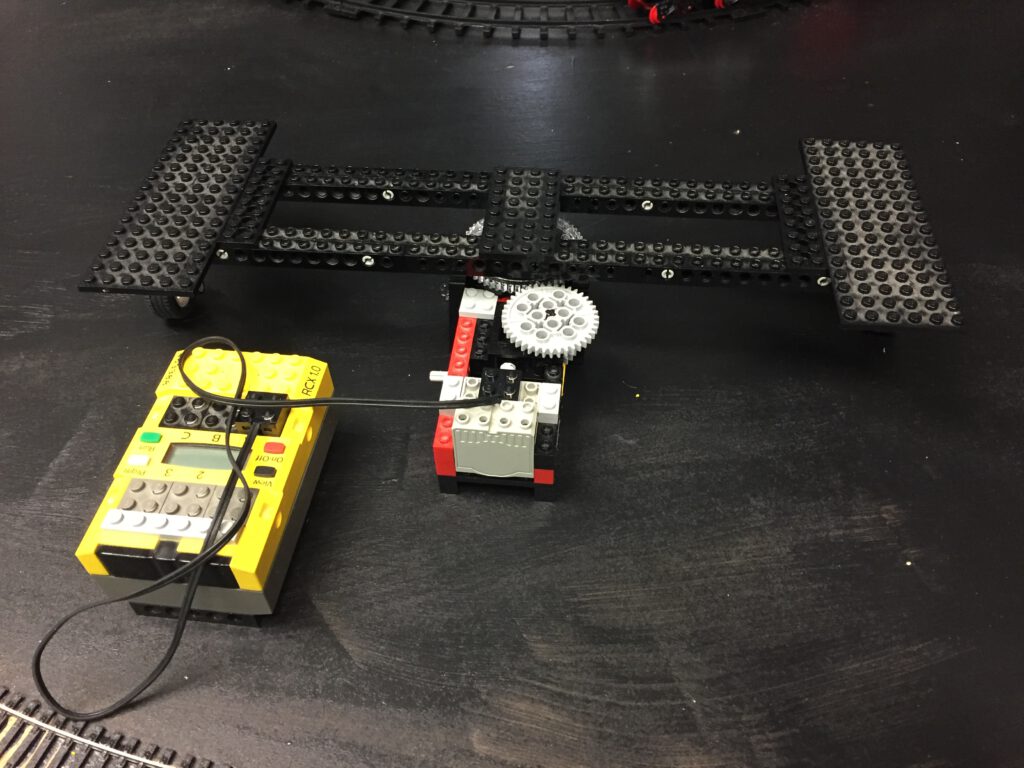
However, it is nicer to get a ball lamp that can be dimmed in brightness and adjusted differently in color. The most suitable is a battery-powered lamp, because then you do not have to worry about the cable routing, while the lamp is circulated by a circulator.

We chose our lamps with the ability to switch their colour. LED-technology makes it easily possible.
However, the colour-dependency of the handheld photometres may let the user prefer some colours or neglect others.
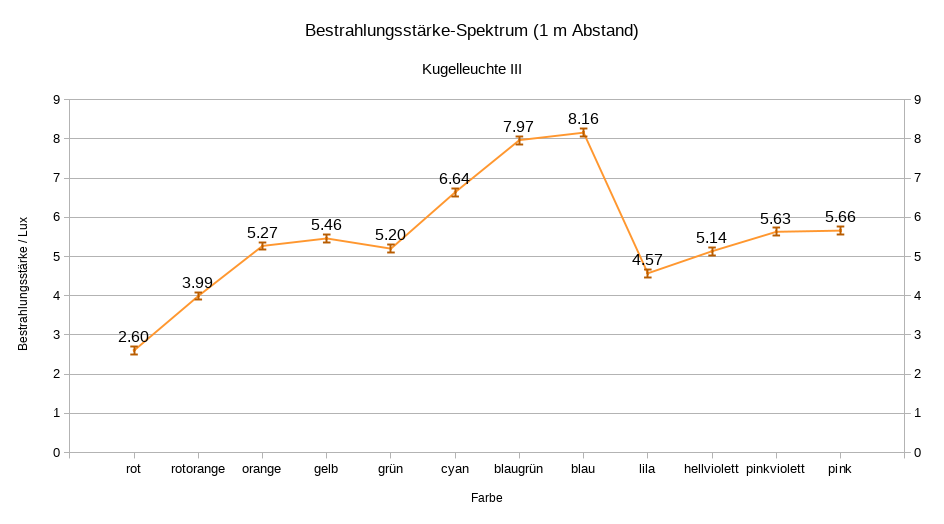
This correlation was not confirmed for the photometer with data logger, because this device (which is intended for measuring UV radiation from screens) is almost blind in the red and detects only blue and green (or their share in the respective mixed color).
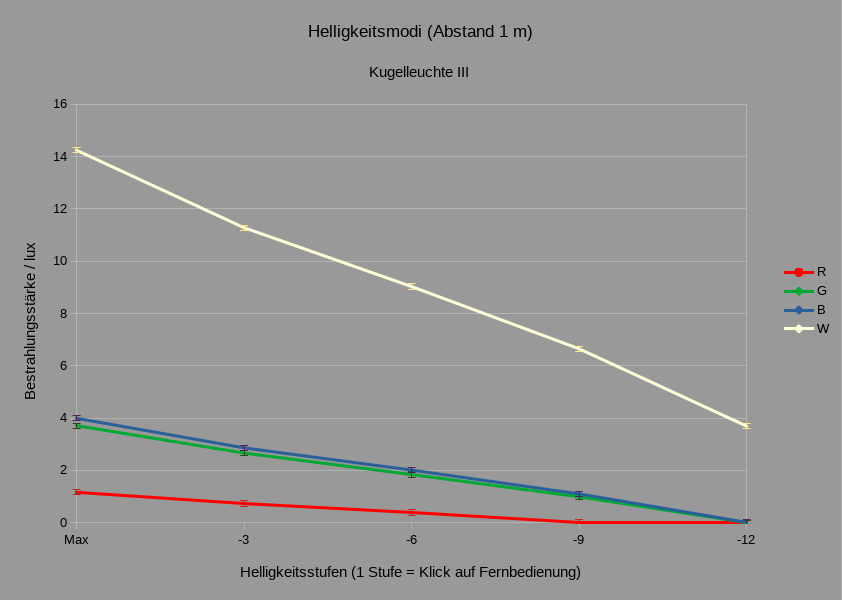
After obtaining a suitable lamp, I measured it in its four color modes: Red LED only, Blue LED only, Green LED only, and all together (white) respectively.
As expected, the sum of the individual luminosities of the colors should give the luminous intensity of white. This is not quite the case in the curve shown here.
There are also steam locomotives which produce steam while they drive. I used such one (where you drip oil into the chimney) in the experiment and therefore let an exoplanet with atmosphere drive around the lamp.
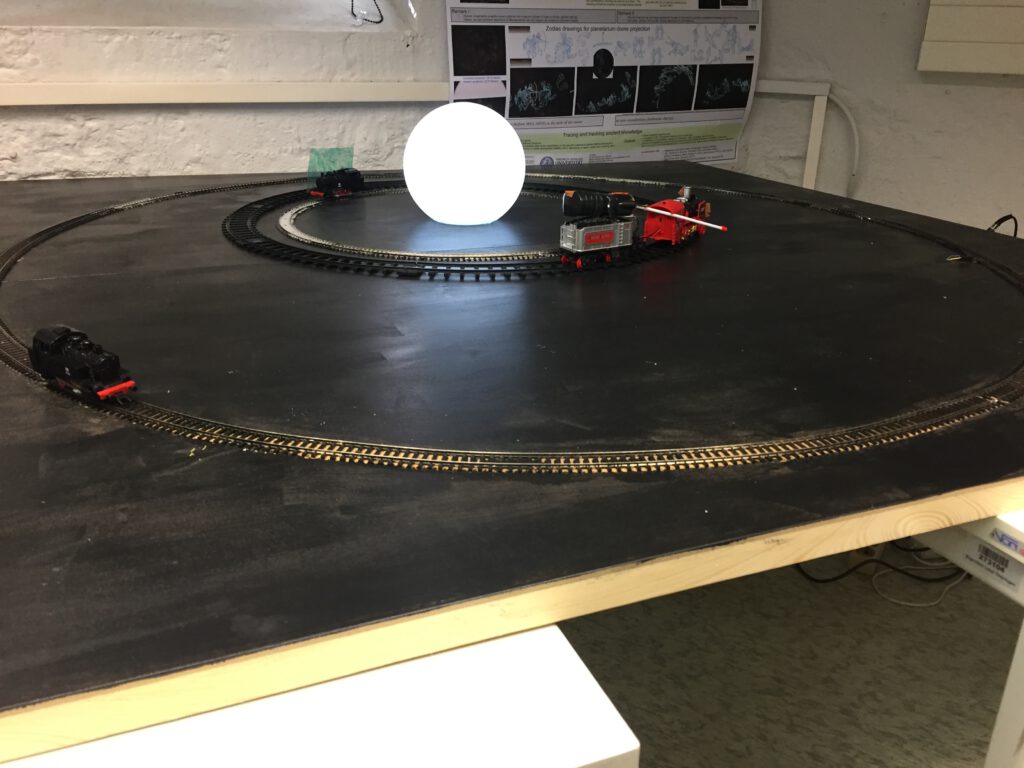
We only managed to do some very basic experiments with a steam train.
Unfortunately, with this rather simple (~20 €) set up, it did not work; our simple photometres & spectrometres were unable to detect a difference with and without the steam. Still, we believe, the idea could be developed – and then spectroscopy of exoplanet atmospheres in the model could be simulated.